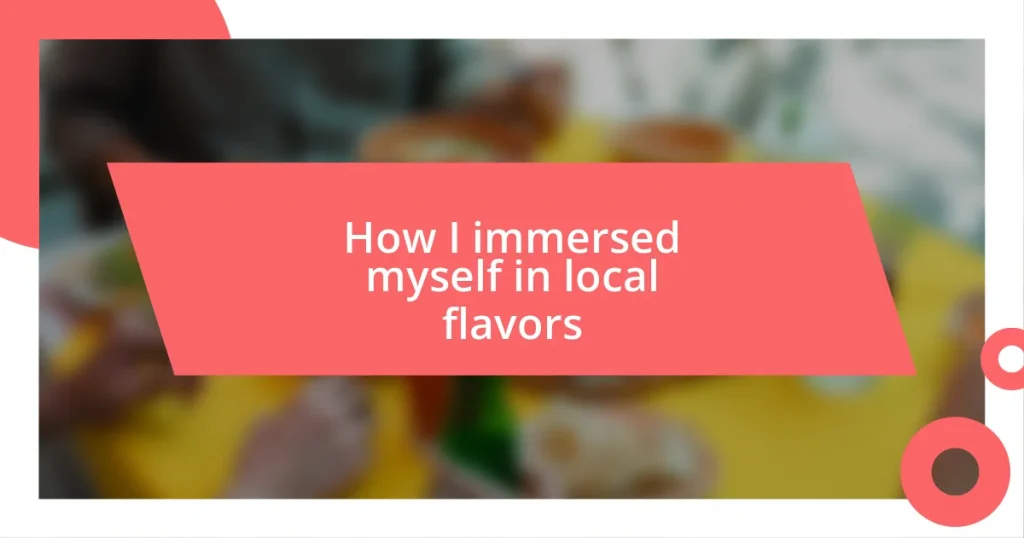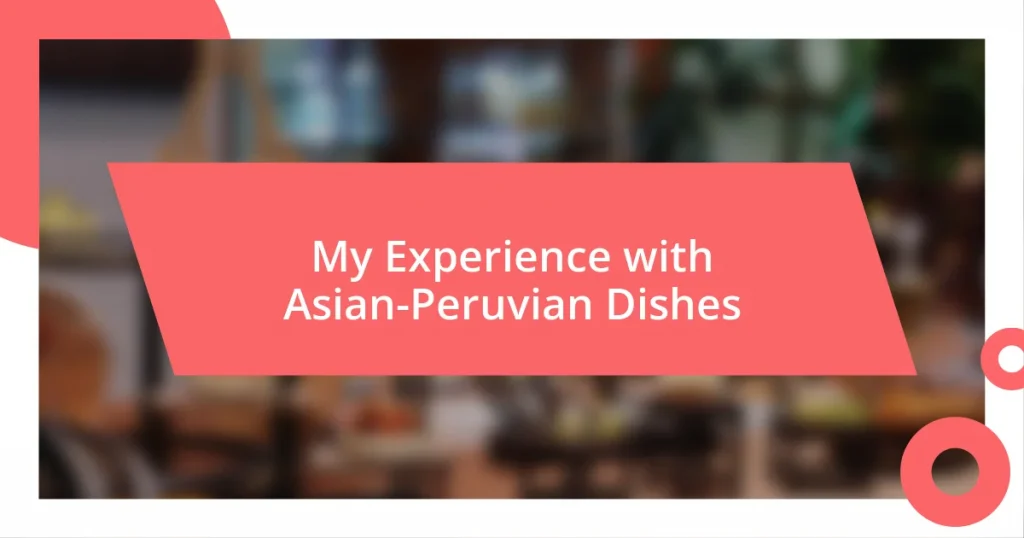Key takeaways:
- Understanding local cuisine involves exploring the cultural stories and traditions behind dishes, enhancing the travel experience beyond mere tasting.
- Researching food traditions connects travelers to communities, revealing the significance of local ingredients and cooking practices through engaging conversations.
- Documenting culinary experiences through writing and photography helps capture and reflect on the emotional connections formed with food and its cultural context.

Understanding local cuisine
Understanding local cuisine goes beyond just tasting different dishes; it’s about uncovering the stories and traditions that shape them. I remember sitting in a quaint little bistro in Italy, where the owner shared how her grandmother’s recipe for pasta sauce had been passed down for generations. That moment made me appreciate not just the flavors on my plate, but the history behind them.
When I traveled to Thailand, I found myself captivated by the vibrant use of herbs and spices. I vividly recall a cooking class where the instructor explained the balance of sweet, sour, salty, and spicy flavors that define Thai cuisine. It struck me then—how can we ever truly understand a culture without tasting its essence? For me, each bite was like a window into the local heart and soul.
Reflecting on these experiences, I’ve come to realize that understanding local cuisine is a journey of exploration and connection. It invites us to ask questions about ingredients, cooking techniques, and even the rituals that accompany meals. Have you ever noticed how food can act as a bridge between cultures? It certainly did for me, enhancing my travels in a way that textbooks never could.
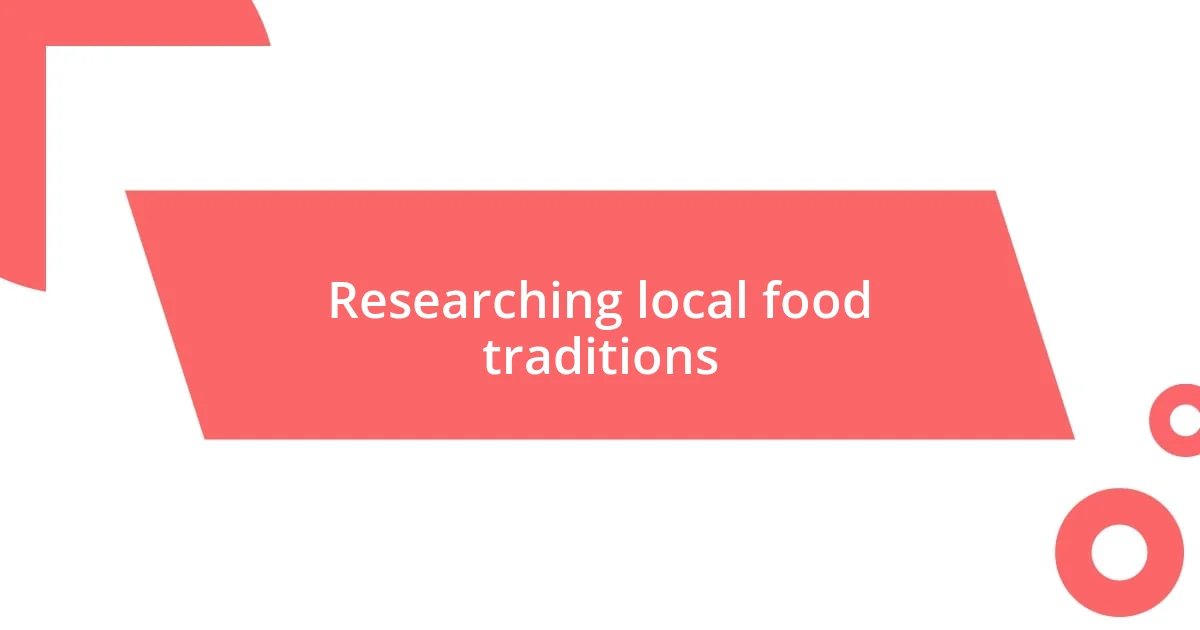
Researching local food traditions
Researching local food traditions is sometimes a delightful surprise. I recall a visit to a bustling market in Mexico City where the colorful stalls offered more than just ingredients. I discovered the significance of each item while chatting with a vendor who enthusiastically explained the cultural relevance of traditional dishes, like mole, which varies from region to region. Those conversations not only enriched my understanding of the cuisine but also connected me directly to the community’s heritage.
While exploring the streets of Japan, I took the time to learn about umami, often referred to as the “fifth taste.” This new awareness transformed my dining experiences. I remember how a simple bowl of ramen became a delicious lesson in the importance of balance in flavors. Engaging with local chefs and home cooks brought revelations about ingredient sourcing and seasonal cooking, deepening my appreciation for their meticulous culinary practices.
In my opinion, immersing oneself in local food traditions requires a blend of curiosity and openness. I found that reaching out to locals, whether through interviews or casual conversations, can yield incredible insights. For instance, a friendly restaurant owner in Marrakech shared stories about traditional tagine, revealing how each layer of flavor tells a story of the surrounding landscape and culture. Isn’t it fascinating how food can weave together tales of history and identity?
| Location | Food Tradition |
|---|---|
| Mexico City | Market culture and regional variations of dishes like mole |
| Japan | Importance of umami in dishes and seasonal cooking |
| Marrakech | Tagine cooking and its connection to local landscapes |
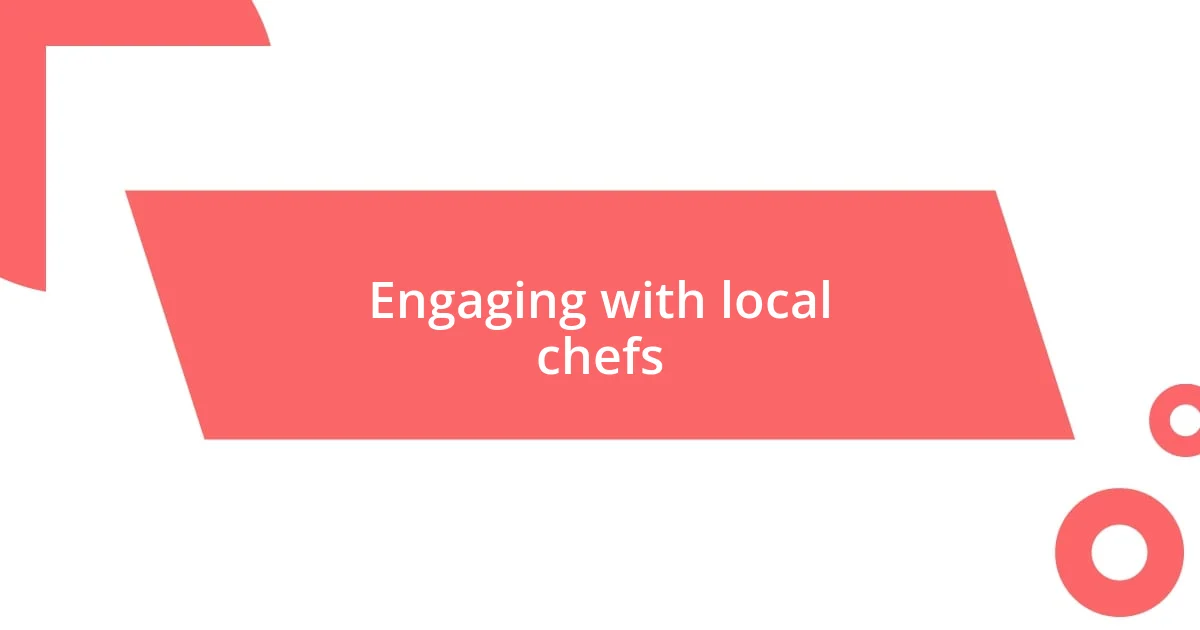
Engaging with local chefs
Engaging with local chefs has been one of the most rewarding aspects of my culinary journey. I remember the first time I stepped into a tiny kitchen in the heart of a bustling Moroccan medina. The head chef, a warm and animated woman, welcomed me with open arms, sharing her secret spice blend for harira soup. It felt as though I was being let in on a cherished family secret. That connection made the flavors come alive, enriching my understanding of not just the dish, but the culture around it.
I wholeheartedly believe that chefs are the storytellers of a community, weaving narratives through their culinary creations. Here’s what I’ve learned when engaging with them:
- Personal Stories: Chefs often share anecdotes about why they became passionate about cooking, which adds depth to the meal.
- Ingredient Insights: Conversations reveal where they source their ingredients and the importance of local produce.
- Culinary Techniques: Observing their methods in the kitchen offers invaluable lessons that aren’t found in cookbooks.
- Cultural Significance: Each dish typically has historical context, giving you a newfound respect for its origin.
Every interaction with a chef leaves me with a sense of connection—an understanding that food is more than just sustenance; it’s a celebration of culture and community.
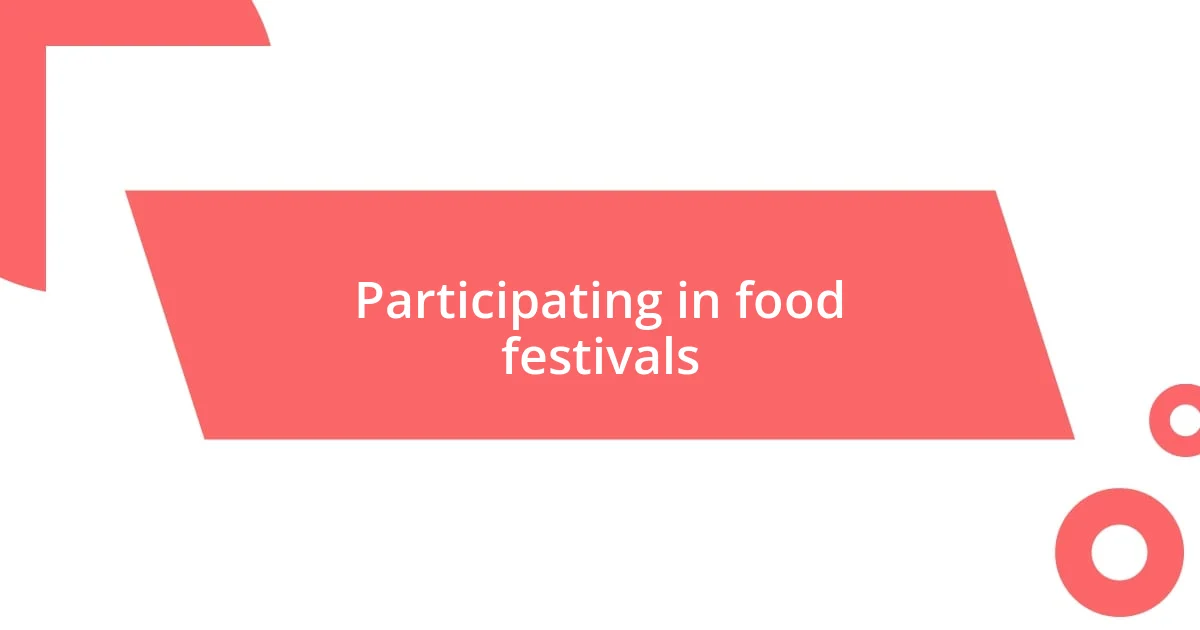
Participating in food festivals
Participating in food festivals has been an eye-opening experience for me, filled with flavors and connections that linger long after the events. I can vividly recall a vibrant food festival in Thailand, where the air was thick with the aroma of street food. I joined a local family at a communal table, sharing laughter and stories over bowls of spicy tom yum. It struck me how food festivals create a sense of unity, bringing together people from all walks of life to celebrate regional dishes. Have you ever felt that rush of excitement when discovering a new flavor among strangers? It’s an exhilarating experience.
Exploring the different booths at these festivals often leads to delightful surprises. At one festival in Italy, I stumbled upon a small stand showcasing artisanal cheeses. The cheesemaker, brimming with pride, offered samples of his pecorino and spoke passionately about the aging process. Listening to his tales of tradition and technique turned the tasting into a cultural insight, making each bite feel richer. It’s moments like these that remind me how food is not just about sustenance but a vehicle for storytelling.
What resonates deeply with me is witnessing the creative passion of local chefs at events. At a recent festival in my hometown, I watched a chef turn simple ingredients into culinary masterpieces right before my eyes. The enthusiasm in her cooking, paired with her willingness to engage with festival-goers, made her dishes stand out. I often wonder how many people leave these events inspired to try a new recipe or explore a new cuisine. The energy at food festivals is palpable and often leaves me reflecting on how important it is to celebrate local flavors and traditions.

Documenting my culinary journey
Documenting my culinary journey has become an integral part of how I connect with local flavors. I recall an evening in a small village in Mexico, where I dedicated myself to capturing the essence of a family’s vibrant kitchen. While snapping pictures of tamales steaming gently on the stove, I couldn’t suppress my curiosity; I asked how the recipe had been passed down through generations. I could practically feel the weight of tradition in her voice, and that moment deepened my appreciation for every bite.
Recording my experiences in a journal has been my go-to method for reflection. I often write about not only what I tasted but how those flavors made me feel. For instance, I once savored a bowl of pho on a rainy day in Hanoi, and the warmth enveloped me like a comforting hug. I documented the contrast between the fresh herbs and the rich broth, but what lingered most was the sense of belonging I felt in that bustling little shop. Isn’t it fascinating how food can connect us to places and emotions in such profound ways?
In addition to written notes, I love to capture the hustle and bustle of local markets through photography. Each click of the camera feels like I’m archiving a moment in time. I remember bustling through a spice market in Istanbul and snapped a photo of vibrant turmeric against the backdrop of colorful textiles. I asked the vendor about his favorite spice, and he shared a story about his mother’s famous pilaf, revealing not just a recipe but a slice of his heritage. This blend of food and storytelling truly embodies what it means to document a culinary journey; every snapshot is a piece of a larger narrative waiting to be tasted and shared.










